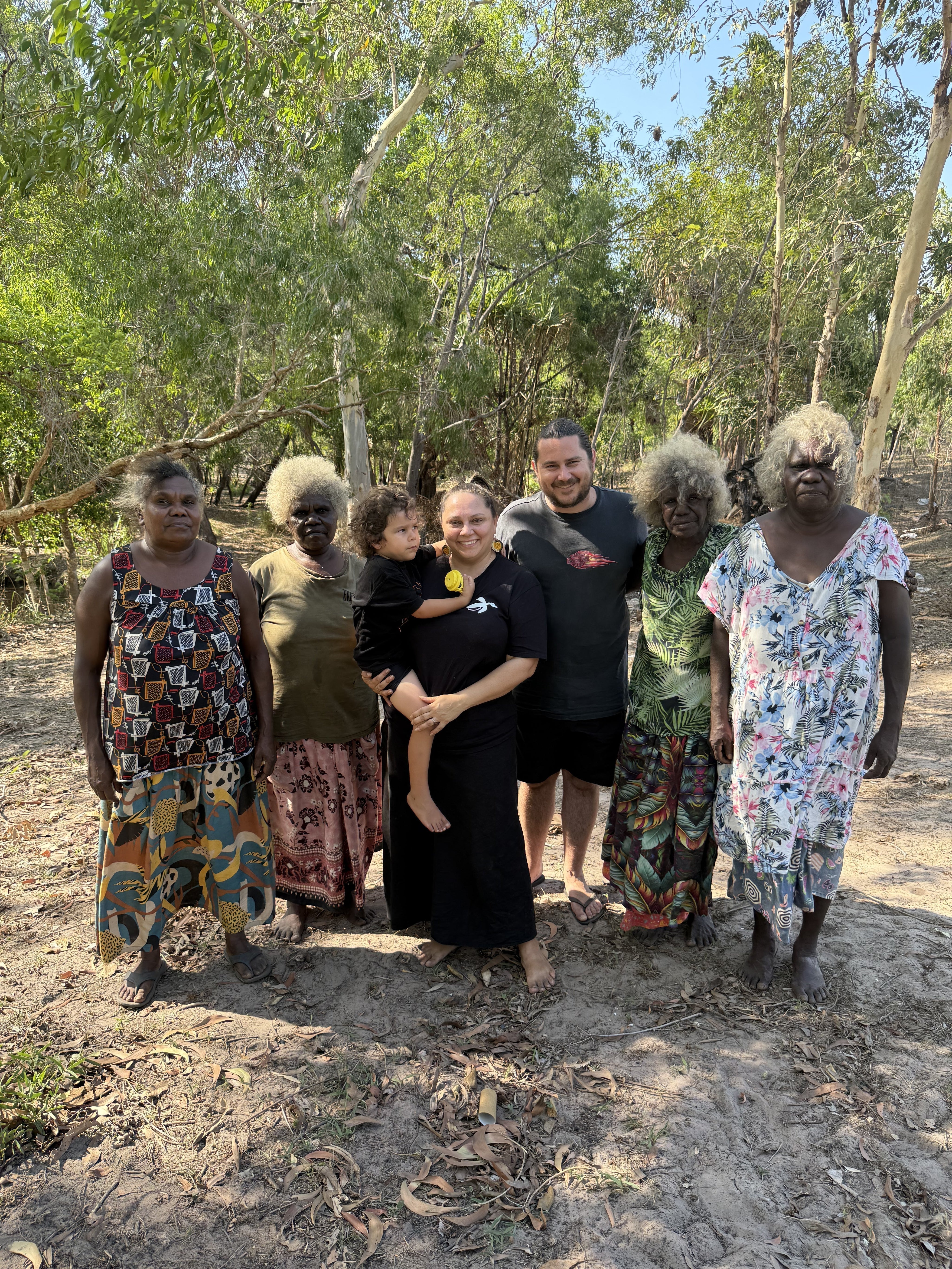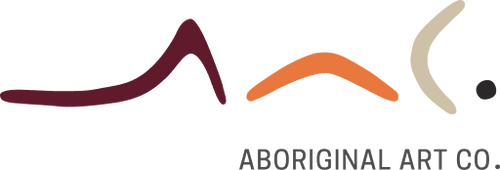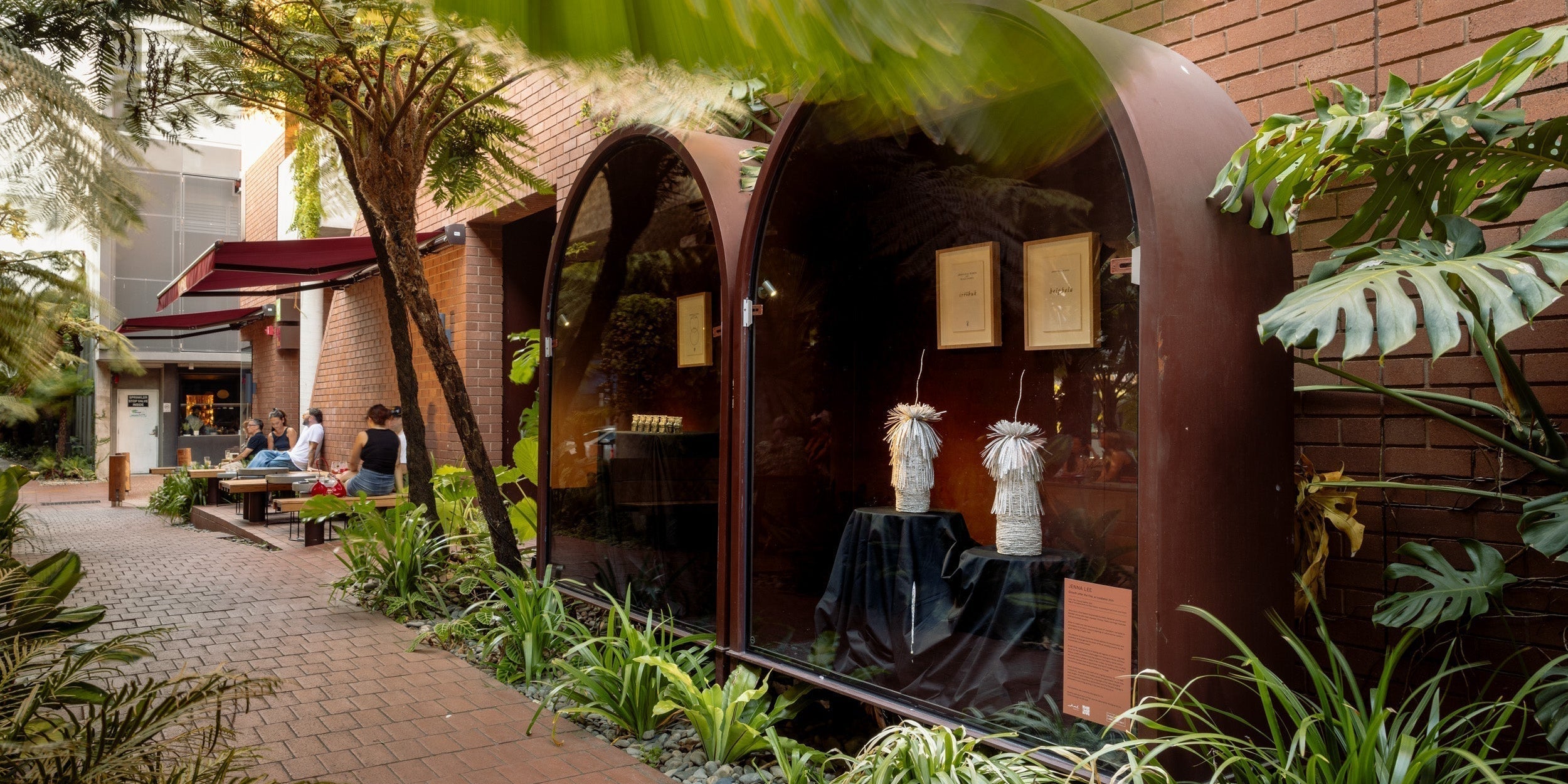Visiting Maningrida Arts and Culture

Following on from my last blog, our journey through Arnhem Land continued with a visit to Maningrida Arts and Culture, where we had the privilege of spending a short but unforgettable time with the artists.
A special project brought me, my partner Troy, our four-year-old son Charlie, and our friends and colleagues, Tahlia and Zac, to this region to connect with artists through weaving. While I previously shared our experiences at Bula’bula Arts, this leg of our trip was equally enriching.
Arriving in Maningrida
We were fortunate to stay one night in Maningrida and, of course, to visit the renowned Maningrida Arts and Culture. Walking into the art centre, we were immediately struck by the sheer volume of breathtaking artwork. The showroom displayed stunning works, and the hallways and stockrooms overflowed with pieces waiting to be photographed or shipped to exhibitions worldwide. The scale of artistry in Maningrida was both humbling and exhilarating.

A Glimpse into Maningrida Arts and Culture
Maningrida Arts and Culture is one of Australia’s most significant Aboriginal art centres, representing over 700 artists from across the region. The centre showcases a diverse range of artistic practices, from bark paintings, mimi sculptures, and lorrkkon poles to intricate fibre art and weaving. Many of these pieces are created offsite at artists’ homes, allowing flexibility and independence in their practice. The art centre not only fosters artistic excellence but also serves as a vital economic and cultural hub for the community.
With such a wealth of artistic talent, space is always at a premium. We were excited to hear about a major investment in a new building, which will allow for better storage and display of artwork while enhancing visitor experiences. These kinds of developments bring significant economic benefits to remote communities, helping to sustain art-making traditions while generating employment and income for artists and their families.
A Gathering at Blyth River Crossing
Before arriving in Maningrida, we had a unique experience that highlighted the strong connections between artists across Arnhem Land. Mel from Bula’bula Arts arranged for weavers from both Ramingining and Maningrida to meet at Blyth River Crossing, a halfway point between the two communities. Many of the artists had relatives in both places, and it was heartwarming to see them reunite through this weaving project.
Mel came well-prepared with fresh fish and buffalo ribs, which were cooked over an open fire, while a billycan boiled away, brewing a strong pot of tea. Despite the ever-present awareness of crocodiles in this region, we were assured that this particular part of the river was safe. Taking their word for it, we enjoyed a refreshing dip in the cool water. As we swam, a large flock of black cockatoos arrived, perching in the treetops and filling the air with their unmistakable calls—a magical and grounding moment in the heart of Country.
As the afternoon came to a close, the Bula’bula group returned to Ramingining while our team followed the Maningrida artists back to their community, arriving just in time to grab a takeaway meal from Wild Foods before settling in for the night.
A Day of Weaving and Cultural Exchange
The next morning, we had the privilege of spending the day with Maningrida’s master weavers: Maureen, Anabelle, Doreen, Freda 1, Freda 2, and Dorothy, as well as Linda from Milingimbi. We were warmly welcomed into a private outstation about 40 minutes out from Maningrida, a secluded and serene spot beside a flowing creek.
A large woven mat was rolled out, and we gathered near the fire. This time, kangaroo tail was on the menu, cooked over the flames. It was our first time trying it, and it was sticky and delicious, the rich, smoky flavour added another layer to our immersive cultural experience.
Connections and New Techniques
It turned out that we already had some shared connections with the weavers. Freda and Dorothy had previously spent time with our good friends—Brisbane-based weavers Sonja and Leecee, and curator Freja Carmichael. That shared history became an instant icebreaker, making our connection comfortable and welcoming.
One of the most fascinating aspects of the experience was observing how the Maningrida weavers approached their work differently from the Bula’bula artists. Rather than weaving across the wire frames from the top down, as we had seen the previous day, they began by wrapping the frame first and then working their way toward the middle. Though similarities existed, each artist brought their own signature style.
Anabelle, in particular, stood out with her playful and innovative approach—she began her weaving with a beautifully distinct yawkyawk (mermaid-like figure), full of character and creativity. Watching her bring her vision to life was both inspiring and joyful. It was a short but meaningful exchange with Maningrida artists and we are grateful to have spent time with the group.

Cahills Crossing
Homeward bound, we made our way through Cahills Crossing and found ourselves anxiously waiting for the tide to go down. The sight of numerous crocodiles lurking in the water added to our nerves, making the wait feel even longer. Finally, when it was safe to cross, we carefully navigated our way over with water up to the windows and crodiles only meters away. Just 20 minutes after the crossing, our adventure took another turn when we popped a tyre, giving us an unexpected roadside pit stop to switch over to the spare. This didn’t make us mad, instead it was excitement and laughter as we reflected on what an adventure it had been!

A Stop at Injalak Arts on the Way Home
On our journey back, we made an important stop at Injalak Arts in Gunbalanya. Injalak Arts is renowned for its exquisite fibre works, bark paintings, and screen-printed textiles. Walking through the centre, we saw artists working in the shade, delicately applying ochre to bark and weaving intricate pandanus mats. The vibrancy of the colours and the depth of storytelling in each piece were incredible to witness firsthand.
It was a fitting end to our journey—one that reinforced the importance of supporting and celebrating First Nations artists. The entire experience across Arnhem Land left us with a deep appreciation for the resilience, skill, and generosity of the artists we met.
A Lasting Impression
Our visit to Arnhem Land was short but left a deep impression on us. The generosity of the artists in sharing their stories, knowledge, and skills was something we will never forget. We left with a profound respect for their artistry and the cultural strength that continues to thrive in these remote communities.
These kinds of experiences remind us why it is so important to support and celebrate Aboriginal and Torres Strait Islander artists. Each woven piece, bark painting, and sculpture tells a story—one of Country, kinship, and thousands of years of tradition.
We are incredibly grateful to Brooke, the team at Maningrida Arts and Culture, and all the artists who welcomed us so warmly. Our time with them was filled with learning, laughter, and unforgettable moments.
Mindful purchases
As the wet season slows tourism and access to the communities, for these art centres the sales can drop significantly too, making this a difficult time for remote artists to continue their arts practice. We were mindful of this and made sure to purchase artworks upfront, supporting the artists through these quieter months.
You can explore stunning artwork from Maningrida, Injalak Arts, and other remote communities in our store or online.
Every purchase directly supports First Nations artists and helps sustain these rich cultural traditions.
Discover more in our shop! See the Journey through Arnhem Land collection.
If you enjoyed this, read the previous blog about the journey to Bula’bula Arts and the beginning of our journey to Arnhem Land.
Written by Managing Director, Amanda Hayman


